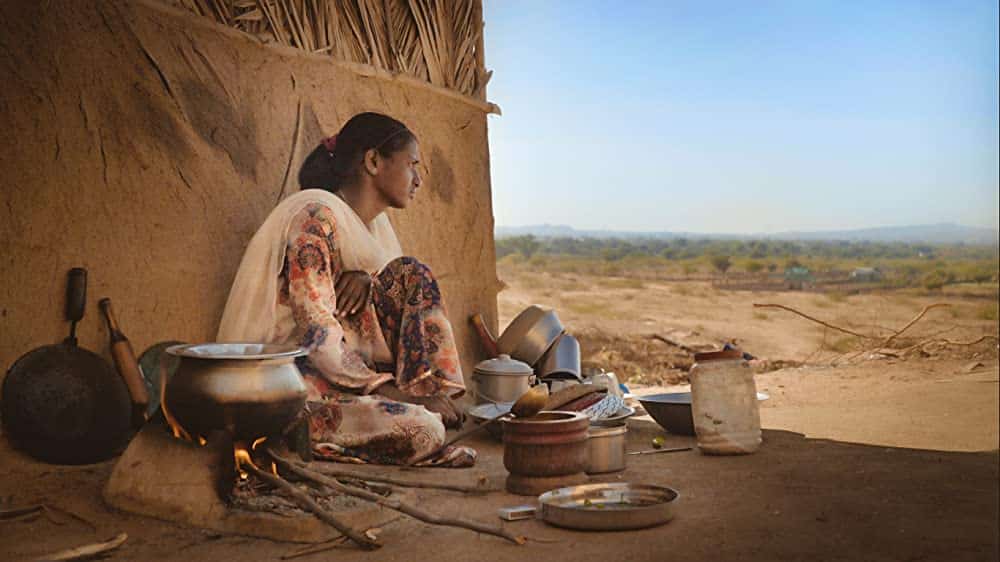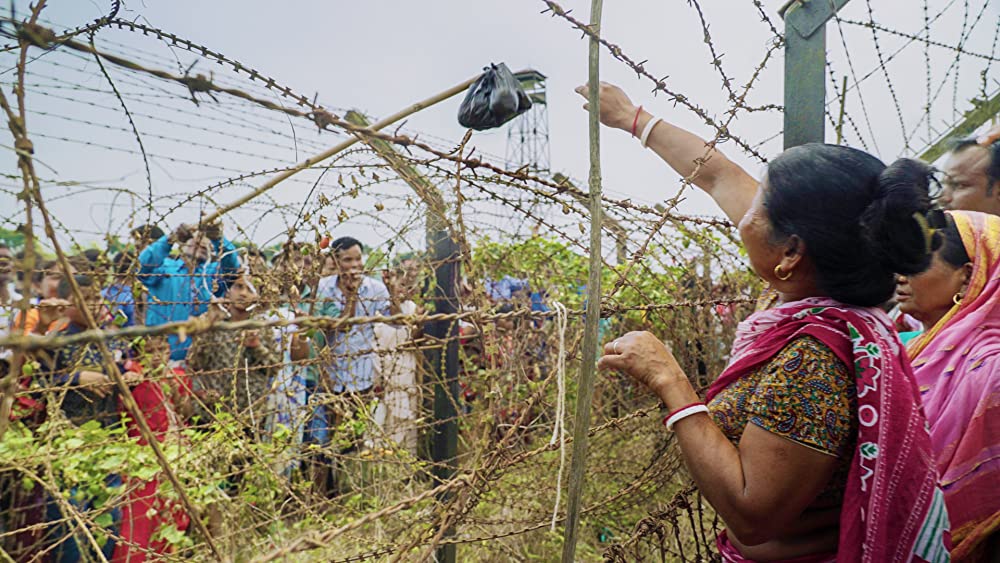Samarth Mahajan’s documentary about life on India’s borders is engaging, involving, and dense.
Too often, filmmakers think they can make a documentary simply by picking a good subject. But the mark of a good documentary is not the importance or controversy of its subject, but the way that its filmmaker convinces their audience that the subject is worth exploring. Samarth Mahajan’s Borderlands accomplishes just this, and does so by pulling off the difficult task of spinning what could be disjointed or arbitrary subjects into a compelling thread that speaks to the history and dynamics of a region.
Borderlands focuses on the communities of people who live near the different national borders of India. India is currently bordered by seven different countries – Pakistan, Nepal, Bhutan, Myanmar, China, Sri Lanka, and Bangladesh. The history of these borders is vast and dense, consisting of major wars, invasions, imperialist conquest, and political turmoil.

The communities who live along India’s borders have been shaped through centuries by these events. The documentary considers several people across the northern borders of India (India’s south is mainly surrounded by the Indian Ocean, with Sri Lanka neighboring close to the southern tip) including Imphal, West Bengal, Jodhpur, Dinanagar, and a Nepalese city called Birgunj.
Even as the film encapsulates maybe only 15% of India (and Nepal) as a country, it showcases the diversity of cultural traditions that exist within and outside the borders. Women participating in religious ceremonies; a filmmaker who makes low-budget movies; a young girl rescued from human trafficking; an activist; and even the filmmaker’s own mother show us their lives, ideas, regrets, and thoughts. Mahajan incorporates contextual sequences of political and social happenings that complement the intimate portrayals of his subjects. The reality of border communities is clear in the film’s fabric – they are always in the middle of national politics.
The sequence between Mahajan and his mother is particularly compelling. It brings the artist into the film as a participant in the culture that he’s displaying for his audience. Mahajan’s mother weeps that he doesn’t have time for her — a common refrain among older generations, as their children become absorbed in the world’s churning while they are distanced out of its orbit.

In his 2003 documentary Ramkhind, about the reclusive Warli tribe, director Amit Dutta considered the filmmaker and his camera a piercing eye, complicit in the exploitation of subjects merely by its existence to expose. When a filmmaker builds an emotional connection to the material and subjects, that approach can counter a feeling of ‘otherness’ and instill incredible empathy.
If there’s a drawback to Borderlands, it’s in the abruptness of its transitions from one region to the next. Mahajan leaves a few sequences hanging — I’m sure that’s meant to keep the viewer interested, as the narrative shifts back and forth between the various subjects, but it does get frustrating to not be able to draw an arc for certain topics discussed in the film’s various interviews and sequences.
Some of Borderlands‘ subjects fly by in the blink of an eye, and one hopes that perhaps we could linger with them bit longer before rushing on. If the form and grammar of a documentary are designed to thread together a compelling narrative, then it would be better to treat individual sequences as mini-stories rather than cut up parts of a larger whole.
This is a documentary that values its subjects and their realities over its prospects as ‘entertainment’ for an audience.
Borderlands reminds you of nothing less than Kirsten Johnson’s Cameraperson, if only because the former seems like a compilation of sequences from several different documentaries — except in Johnson’s case, that was on purpose.
Despite the drawbacks, Mahajan still keeps the whole film consistently revealing by virtue of being able to both navigate the serious and whimsical sides of his subjects. He traverses the history of each region highlighting what remains important to the people living there rather than what he or we may find sensational. This is a documentary that values its subjects and their realities over its prospects as ‘entertainment’ for an audience, and that should be commended.
Borderlands Trailer:
Read next: The Spool's Best New Releases
Streaming guides
The Best Live TV Streaming Services With Free Trial
The praises of live TV streaming services don’t need to be further sung. By now, we all know that compared to clunky, commitment-heavy cable, live TV is cheaper and much easier to manage. But just in case you’re still on the fence about jumping over to the other side, or if you’re just unhappy with ... The Best Live TV Streaming Services With Free Trial
How to Watch Power Book III: Raising Kanan Season 3
Season 3 of the hotly anticipated Power spin-off, Power Book III: Raising Kanan, is arriving on Starz soon, so you know what that means: it’s the ’90s again in The Southside, and we’re back with the Thomas family as they navigate the ins and outs of the criminal underworld they’re helping build. Mekai Curtis is ... How to Watch Power Book III: Raising Kanan Season 3
How to Watch Doctor Who: 60th Anniversary Specials
Ladies and gentlemen, we’re so back! To celebrate Doctor Who’s 60th anniversary, the BBC is producing a three-episode special starring none other than the Tenth/Fourteenth Doctor himself, David Tennant. And to the supreme delight of fans (that would be me, dear reader), the Doctor will be joined by old-time companion Donna Noble (Catherine Tate) and ... How to Watch Doctor Who: 60th Anniversary Specials
Which Netflix Country has Interstellar?
Maybe you’ve just seen Oppenheimer and have the strongest urge to marathon—or more fun yet, rank!—all of Christopher Nolan’s films. Or maybe you’re one of the few who haven’t seen Interstellar yet. If you are, then you should change that immediately; the dystopian epic is one of Nolan’s best, and with that incredible twist in ... Which Netflix Country has Interstellar?
Which Netflix Country Has Each Movie of The Hunger Games?
For whatever reason, The Hunger Games series isn’t available in the same countries around the world. You’ll find the first and second (aka the best) installments in Hong Kong, for instance, but not the third and fourth. It’s a frustrating dilemma, especially if you don’t even have a single entry in your region, which is ... Which Netflix Country Has Each Movie of The Hunger Games?
How to Watch ESPN With A Free Trial
One of the major concerns people have before cutting the cord is potentially losing access to live sports. But the great thing about live TV streaming services is that you never lose that access. Minus the contracts and complications of cable, these streaming services connect you to a host of live channels, including ESPN. So ... How to Watch ESPN With A Free Trial
How to Watch Paramount Network With a Free Trial
To date, Paramount Network has only two original shows on air right now: Yellowstone and Bar Rescue. The network seems to have its hands full with on-demand streaming service Paramount+, which is constantly stacked with a fresh supply of new shows. But Yellowstone and Bar Rescue are so sturdy and expansive that the network doesn’t ... How to Watch Paramount Network With a Free Trial
How to Watch WE TV With a Free Trial
Previously “Women’s Entertainment,” We TV has since rebranded to accurately reflect its name and be a more inclusive lifestyle channel. It’s home to addictive reality gems like Bold and Bougie, Bridezillas, Marriage Boot Camp, and The Untold Stories of Hip Hop. And when it’s not airing original titles, it has on syndicated shows like 9-1-1, ... How to Watch WE TV With a Free Trial
How to Watch TNT Sports With A Free Trial
For many sports fans, TNT is a non-negotiable. It broadcasts NBA, MLB, NHL, college basketball, and All Elite Wrestling matches. And, as a bonus, it also has reruns of shows like Supernatural, Charmed, and NCIS, as well as films like The Avengers, Dune, and Justice League. But while TNT used to be a cable staple, ... How to Watch TNT Sports With A Free Trial
How to Watch Comedy Central With a Free Trial
It’s no coincidence that many of today’s biggest comedians found their footing on Comedy Central: the channel is a bastion of emerging comic talents. It served as a playground for people like Nathan Fielder (Fielder For You), Ilana Glazer and Abbi Jacobson (Broad City), Tim Robinson (Detroiters), and Dave Chappelle (Chappelle’s Show) before they shot ... How to Watch Comedy Central With a Free Trial
How to Watch FX With a Free Trial
You’d be hard-pressed to find a bad show airing on FX. The channel has made a name for itself as a bastion of high-brow TV, along with HBO and AMC. It’s produced shows like Atlanta, Fargo, The Americans, Archer, and more recently, Shogun. But because it’s owned by Disney, it still airs several blockbusters in ... How to Watch FX With a Free Trial